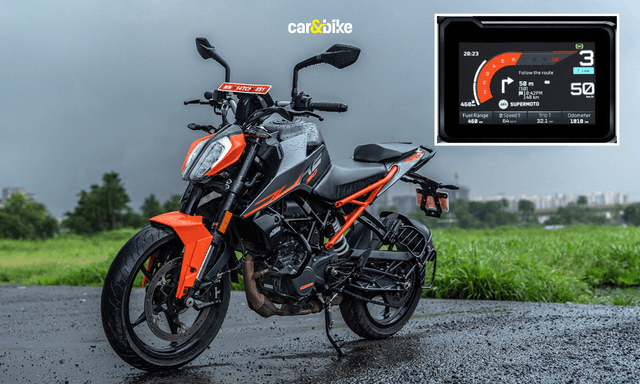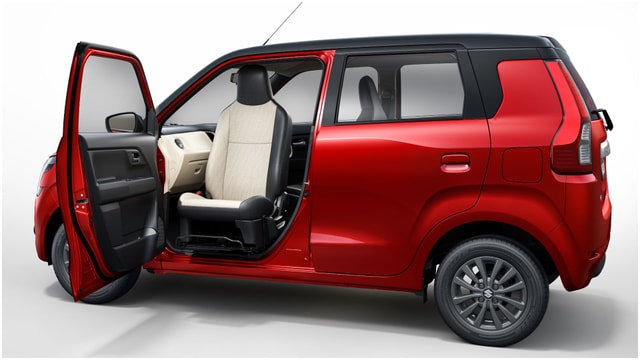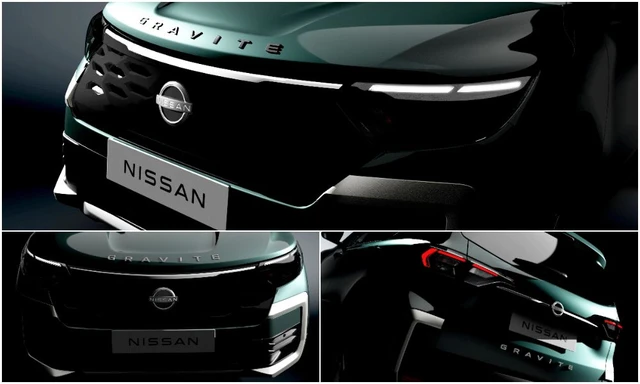Three Types Of Air Charging Methods Used In Automobiles

A typical forced air induction setup consists of 3 major components. The compressor driver, the compressor and the intercooler. In the setup, the intercooler which cools down the heavily compressed air is consistent through any type of system. Based on the differences in the compressor driver and type of compressor, forced induction systems are mainly classified into two types.
Turbocharging:

Photo Credit: en.wikipedia.org
In this method, the air density is increased with the assistance of the engine's own exhaust gases. A typical turbocharger assembly consists of turbines for driver side as well as compressor side. The driving turbine runs on the exhaust gases of the engine and is directly connected to the compressor turbine. When this compressor turbine reaches a minimum threshold speed, it starts compressing the air to the desired boost pressure required to generate the extra power. A turbocharger system is the most energy efficient method of forced induction since it uses nothing but the engine's exhaust gases to increase the boost pressure. But this method has drawbacks too, which are being resolved with technological advancements. The most common technology put at use is the variable geometry turbocharger where the compressor turbine's vane geometry is designed in such a way that the user feels minimal turbo lag.
Supercharging:

Photo Credit: en.wikipedia.org
A supercharging system utilizes the engine power instead of exhaust gases to drive the compressor component. Though it is quite evident that a supercharger assembly is not much energy efficient like a turbocharger, it compensates for the lack in efficiency by providing pressure boost without any lag. The compressor part of the supercharger system is of three major types. A roots-type supercharger makes use of two intermeshed paddles which compress the air by positive displacement while spinning and thereby compress the air at a same rate per rotation across the entire engine speed range. A screw-type supercharger is similar but more complex, however, it is also more efficient in comparison with roots type supercharger. The final type of supercharger is a centrifugal supercharger which does not compress the air like any other positive displacement supercharger but like a typical turbocharger.
Twin-Turbocharging and Twincharging:

Photo Credit: www.bmwblog.com
With increased research in both turbocharger and supercharger technologies, we have come up with solutions to improve all the issues that cropped up with these two technologies. A typical twin turbocharger has dedicated turbochargers for low engine speeds and high engine speeds. This helps us take advantage of both worlds with low turbo-lag and low boost pressure of a smaller turbo as well as high boost pressure and operating speed of a larger turbo. Some twin turbo systems use a smaller turbo to boost the air to a minimum threshold pressure which is then further boosted to desired pressure by the larger turbo. A similar system that involves a supercharger replacing the smaller turbocharger, known as a twincharger setup, is used to attain constant boost pressure throughout the engine speed range.
Trending News
 1 min readTriumph Tracker 400: In Pictures
1 min readTriumph Tracker 400: In Pictures
Latest News
 car&bike Team | Dec 18, 2025KTM 160 Duke With TFT Dash launched At Rs 1.79 LakhThe 5-inch colour TFT dash is borrowed from the 390 Duke and is shared across the brand’s sub-400cc lineup.2 mins read
car&bike Team | Dec 18, 2025KTM 160 Duke With TFT Dash launched At Rs 1.79 LakhThe 5-inch colour TFT dash is borrowed from the 390 Duke and is shared across the brand’s sub-400cc lineup.2 mins read car&bike Team | Dec 18, 2025Lamborghini Urus Seized By Cops Following Viral Clip Of Speeding On Bandra-Worli Sea LinkThe car was seized after a video of it allegedly overspeeding on the Bandra–Worli Sea Link, where the speed limit is capped at 80 kmph, went viral.2 mins read
car&bike Team | Dec 18, 2025Lamborghini Urus Seized By Cops Following Viral Clip Of Speeding On Bandra-Worli Sea LinkThe car was seized after a video of it allegedly overspeeding on the Bandra–Worli Sea Link, where the speed limit is capped at 80 kmph, went viral.2 mins read car&bike Team | Dec 18, 20252025 Ducati XDiavel V4 India Launch Details RevealedThe new Ducati XDiavel V4 will be launched towards the end of December 2025 and will sit alongside the standard Ducati Diavel V4.3 mins read
car&bike Team | Dec 18, 20252025 Ducati XDiavel V4 India Launch Details RevealedThe new Ducati XDiavel V4 will be launched towards the end of December 2025 and will sit alongside the standard Ducati Diavel V4.3 mins read Amaan Ahmed | Dec 18, 2025Maruti WagonR Swivel Front Seat Kit Launched: Check Price, AvailabilityBangalore-based startup TrueAssist Technology Private Limited has developed a mechanism that allows the front passenger seat to swivel outwards, in a bid to improve accessibility for the aged and persons with disabilities.2 mins read
Amaan Ahmed | Dec 18, 2025Maruti WagonR Swivel Front Seat Kit Launched: Check Price, AvailabilityBangalore-based startup TrueAssist Technology Private Limited has developed a mechanism that allows the front passenger seat to swivel outwards, in a bid to improve accessibility for the aged and persons with disabilities.2 mins read Amaan Ahmed | Dec 18, 2025Nissan Gravite MPV (Renault Triber Derivative) To Be Launched Early In 2026Nearly seven years on from the launch of the MPV it shares its underpinnings with arrives Nissan's entry-level 7-seat model; to debut in January.2 mins read
Amaan Ahmed | Dec 18, 2025Nissan Gravite MPV (Renault Triber Derivative) To Be Launched Early In 2026Nearly seven years on from the launch of the MPV it shares its underpinnings with arrives Nissan's entry-level 7-seat model; to debut in January.2 mins read Jafar Rizvi | Dec 18, 2025Tata Sierra Pure, Pure+ Variants Explained In PicturesThe Pure trim of the Sierra is priced from Rs 12.49 lakh to Rs 17.49 lakh (ex-showroom), depending on the powertrain option. Here is a breakdown of what it gets.3 mins read
Jafar Rizvi | Dec 18, 2025Tata Sierra Pure, Pure+ Variants Explained In PicturesThe Pure trim of the Sierra is priced from Rs 12.49 lakh to Rs 17.49 lakh (ex-showroom), depending on the powertrain option. Here is a breakdown of what it gets.3 mins read
 Bilal Firfiray | Dec 18, 2025Mercedes-Benz G450d: The Subtle Power of EvolutionThe Mercedes-Benz G 450d evolves subtly with more power, improved efficiency, and modern tech, while staying true to the timeless G-Class design. And character.4 mins read
Bilal Firfiray | Dec 18, 2025Mercedes-Benz G450d: The Subtle Power of EvolutionThe Mercedes-Benz G 450d evolves subtly with more power, improved efficiency, and modern tech, while staying true to the timeless G-Class design. And character.4 mins read Janak Sorap | Dec 11, 2025Harley-Davidson X440 T First Ride Review: Smarter and SharperHarley-Davidson has taken the X440 and given it a more focused and engaging twist. The result is the X440 T—essentially the same platform but updated in areas that give the motorcycle more appeal and riders more thrill.5 mins read
Janak Sorap | Dec 11, 2025Harley-Davidson X440 T First Ride Review: Smarter and SharperHarley-Davidson has taken the X440 and given it a more focused and engaging twist. The result is the X440 T—essentially the same platform but updated in areas that give the motorcycle more appeal and riders more thrill.5 mins read Shams Raza Naqvi | Dec 10, 20252025 Mini Cooper Convertible Review: More Colour On Indian RoadsThe updated Mini Cooper Convertible is set to be launched in the Indian market in the next few days. We drive it around Jaisalmer for a quick review.1 min read
Shams Raza Naqvi | Dec 10, 20252025 Mini Cooper Convertible Review: More Colour On Indian RoadsThe updated Mini Cooper Convertible is set to be launched in the Indian market in the next few days. We drive it around Jaisalmer for a quick review.1 min read Bilal Firfiray | Dec 8, 2025Tata Sierra Review: India’s New Favourite?Marking its return after a few decades, the reborn Sierra has made everyone sit up and take notice. But is it worth the hype?10 mins read
Bilal Firfiray | Dec 8, 2025Tata Sierra Review: India’s New Favourite?Marking its return after a few decades, the reborn Sierra has made everyone sit up and take notice. But is it worth the hype?10 mins read Girish Karkera | Dec 4, 20252026 Honda Prelude First Drive: Domesticated Civic Type RA sporty-looking coupe built to give customers a taste of performance but not at the expense of everyday practicality.5 mins read
Girish Karkera | Dec 4, 20252026 Honda Prelude First Drive: Domesticated Civic Type RA sporty-looking coupe built to give customers a taste of performance but not at the expense of everyday practicality.5 mins read
































































































































